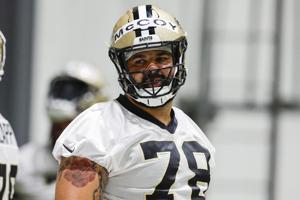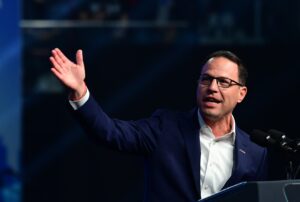
The New Orleans Saints are making significant adjustments to their offensive line for the 2025 season, introducing a bold strategy that could enhance their performance. As part of this transformation, guard Trevor Penning will transition from offensive tackle to left guard, a move that both he and the team hope will yield positive outcomes. With Penning entering the final year of his rookie contract, this shift represents a critical opportunity for him to demonstrate his value to the franchise.
Penning’s move comes alongside the return of the Saints’ longest-tenured offensive linemen, center Erik McCoy and right guard Cesar Ruiz. Both players are looking to rebound from injury-plagued seasons in 2024, which impacted the overall performance of the offense. If Penning adjusts well and the unit remains healthy, the interior offensive line could become a formidable asset for the Saints this year.
Potential Impact of the New Lineup
The success of the Saints’ offensive line hinges largely on the health and performance of Erik McCoy. Throughout his career, McCoy has proven to be a durable player, participating in over 99% of offensive snaps in three of his six seasons. However, injuries have limited him significantly in recent years, with missed games totaling five in 2021, four in 2022, and a career-high ten last season.
Having McCoy on the field is vital, especially as the team navigates the challenges of an inexperienced quarterback. His Pro Bowl-level performance and leadership skills are essential in guiding a young quarterback through pressure situations and protection calls. Notably, in the five games where McCoy played at least 65% of the snaps last season, the Saints achieved a 4-1 record and scored over 35 points in three of those contests.
While McCoy’s presence is crucial, the spotlight is now on Penning. After struggling at both left and right tackle, the Saints are optimistic that a move to left guard will better suit his aggressive style of play. Penning, standing at 6 feet 7 inches and weighing 325 pounds, possesses the physicality needed to dominate in close quarters. This shift aims to leverage his strengths while minimizing his weaknesses, particularly in pass protection.
Challenges and Considerations Ahead
Despite the potential for improvement, there are considerable risks associated with this new alignment. If McCoy suffers another injury, the team may face significant challenges. The Saints have brought back veteran Will Clapp for depth along the interior, but Clapp’s limited experience—playing only 67 offensive snaps last season—raises concerns about the level of play that could follow McCoy’s absence.
Should Penning falter in his new role, the Saints will have to rely on the more experienced Dillon Radunz to fill in, but the uncertainty surrounding Penning’s performance remains. His past issues with technique, particularly in pass protection, could resurface in the new role. Interior pressure can derail an otherwise successful offensive play, making Penning’s adjustment critical for the team’s success.
As the Saints prepare for the 2025 season, they find themselves at a crossroads. The adjustments made to the offensive line could either lead to significant improvement or pose substantial challenges. If Penning can adapt well, the Saints may find themselves with a competitive advantage in the division, particularly against formidable defensive tackles such as Vita Vea of Tampa Bay and Derrick Brown of Carolina.
In summary, the Saints’ offensive line strategy for 2025 carries both promise and risk. If all components align, the team could establish a robust offensive front that enhances overall performance. A successful season may hinge on the question: can Penning rise to the occasion and secure a modest contract extension by proving his mettle in the interior line? The upcoming season will reveal how this gamble plays out.







